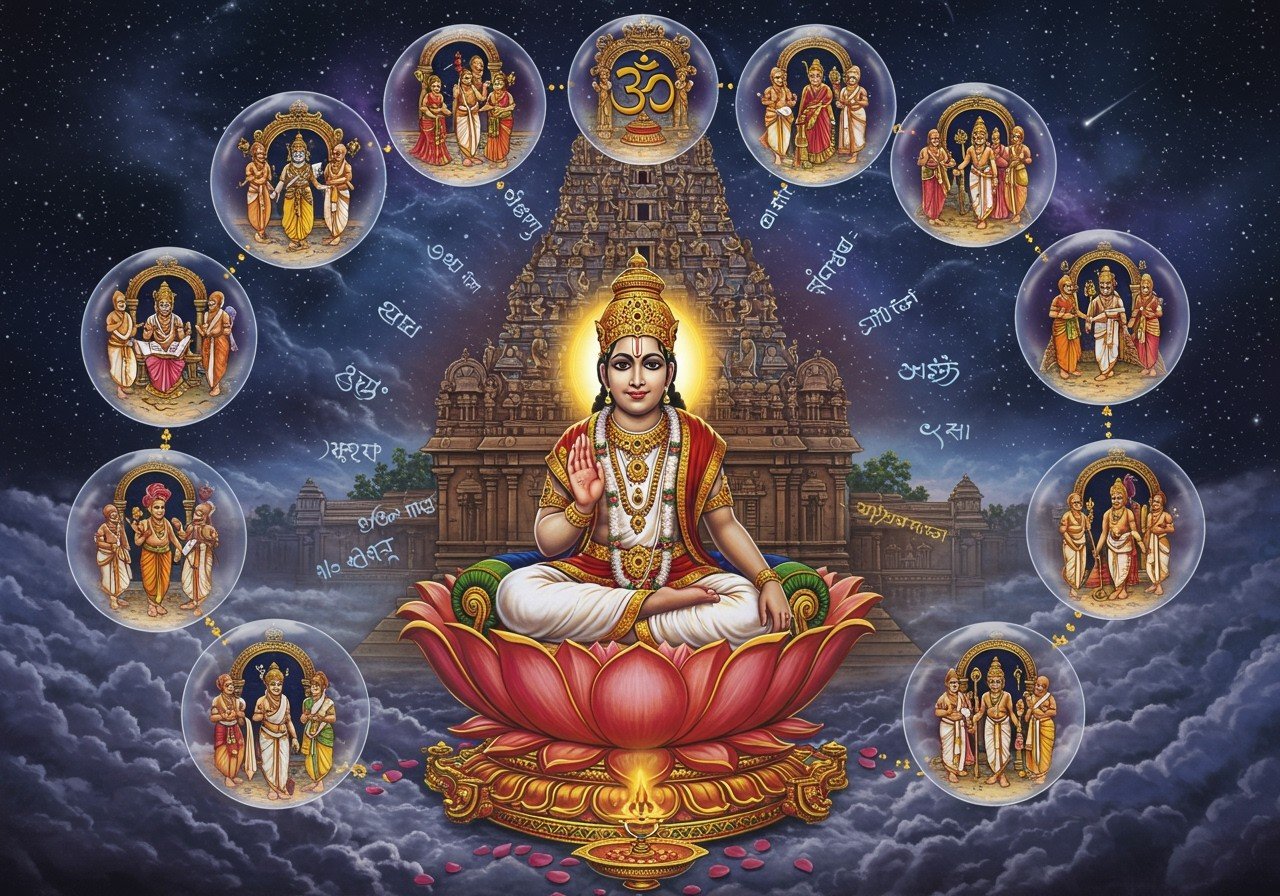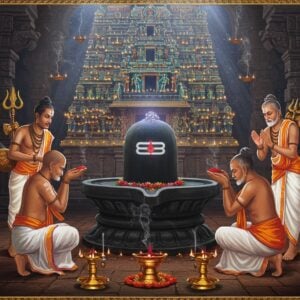
Vishishtadvaita, often translated as “qualified non-dualism,” “non-dualism with differentiation,” or “unity with distinctions,” is a prominent branch of Vedanta philosophy. Originating from the teachings of the sage Ramanuja, it emphasizes the unity of the soul and God while acknowledging their distinct identities. This philosophy is deeply ingrained in Indian culture and has been interpreted across various languages, reflecting a fascinating interplay of diversity and unity. Exploring these interpretations offers a glimpse into the cultural and linguistic nuances of Vishishtadvaita.
Vishishtadvaita in Hindi: Exploring Concepts and Cultural Context
Hindi, one of India’s most widely spoken languages, boasts a rich body of literature on Vishishtadvaita. Key concepts like “qualified non-dualism” (Vishishtadvaita) and “God with attributes” (saguna Brahman) are meticulously rendered in Hindi. These translations, enriched by contributions from Hindi scholars, have profoundly shaped philosophical discourse in India. Terms like “vishishta” and “advaita” accurately convey the essence of the philosophy, making it accessible to Hindi speakers.
Hindi literature on Vishishtadvaita showcases the efforts of prominent scholars who have bridged philosophical concepts with cultural contexts. This ensures that the ancient wisdom of Vishishtadvaita remains relevant today. These works not only preserve Ramanuja’s teachings but also enhance them with contemporary interpretations.
Vishishtadvaita in Tamil: Delving into Tradition and Scripture
Tamil Nadu, Ramanuja’s birthplace, holds a special significance in the history of Vishishtadvaita. Tamil literature, with its deep roots, provides a unique perspective on this philosophy. The Divya Prabandham, a revered Tamil text, is a cornerstone of Tamil Vaishnava tradition and a treasure trove of Vishishtadvaita thought.
Tamil’s rich literary heritage adds depth to the understanding of Vishishtadvaita. Words like “aatma” (soul) and “gunas” (divine qualities) capture the nuances of the philosophy, making the teachings resonate deeply with Tamil speakers. Scholars in Tamil Nadu have diligently preserved Ramanuja’s insights, ensuring their continued influence across generations. Their writings interweave traditional beliefs with fresh perspectives.
Vishishtadvaita in Kannada: A Synthesis of Heritage and Philosophical Inquiry
Karnataka, with its historical ties to the Vijayanagara Empire, has a vibrant Vishishtadvaita tradition. Kannada literature embraces this philosophy, with figures like Madhvacharya drawing inspiration from Ramanuja’s teachings. Kannada translations and interpretations of Vishishtadvaita are both insightful and engaging, offering fresh perspectives.
The Kannada language itself enhances the philosophical discourse, adding layers of meaning to complex ideas. Kannada scholars have ensured that Vishishtadvaita remains a vital part of the region’s spiritual fabric. Regional adaptations, often diverging from Tamil interpretations, provide unique insights into the philosophy.
Vishishtadvaita in Telugu: Expressing Devotion Through Language and Literature
Vishishtadvaita holds a significant place in the spiritual landscape of Andhra Pradesh and Telangana. Telugu literature reflects this through expressive translations and poetic renditions. Figures like Annamacharya disseminated the philosophy through their devotional compositions. Concepts like “moksha” (liberation) and “bhakti” (devotion) resonate powerfully in Telugu.
Telugu’s linguistic features enrich the understanding of Vishishtadvaita, making it accessible to both scholars and the general public. Telugu literature not only preserves Ramanuja’s teachings but also invites wider engagement with the philosophy. The enduring presence of Vishishtadvaita in Telugu culture testifies to its universal appeal.
Comparative Insights: Weaving a Harmonious Tapestry of Understanding
Vishishtadvaita finds expression in Hindi, Tamil, Kannada, and Telugu, each language contributing its unique perspective. While common themes unite these interpretations, each offers a distinct flavor shaped by regional cultural contexts. Literature and oral traditions play a vital role in transmitting Vishishtadvaita, preserving its essence while allowing for diverse interpretations. Each language’s unique characteristics enrich the understanding of this profound philosophy.
Translating complex philosophical ideas across languages presents challenges and opportunities. It demonstrates Vishishtadvaita’s adaptability and its continued relevance in the modern world. This exploration deepens our appreciation for India’s rich spiritual heritage.
Poojn.in: Supporting Your Vishishtadvaita Journey
Poojn.in offers valuable resources for practitioners of Vishishtadvaita across various language communities. We provide authentic ritual items and resources in multiple Indian languages, including English, Hindi, Tamil, Malayalam, Kannada, and Telugu.
- English Resources: Complete puja items with English instructions, detailed product descriptions, and English-speaking customer support.
- Hindi (हिंदी) Support: Full Hindi interface, puja items with Hindi descriptions, and Hindi-speaking customer service.
- Tamil (தமிழ்) Assistance: Tamil product details, traditional items for Tamil Vishishtadvaita practices, and Tamil-speaking support staff.
- Malayalam (മലയാളം) Services: Malayalam product descriptions, Kerala-specific ritual items, and Malayalam-speaking customer support.
- Kannada (ಕನ್ನಡ) Options: Kannada language support, regional puja items, and Kannada-speaking assistance.
- Telugu (తెలుగు) Features: Telugu product descriptions, traditional Andhra-style items, and Telugu customer support.
Shop Now: Explore our Vishishtadvaita Puja Items Collection
You can also find a range of clay items and other puja samagri relevant to your Vishishtadvaita practice.
Note: All Poojn.in products are quality-assured and authentically certified. Our multilingual support team is available to answer your questions about Vishishtadvaita practices and products.
Embracing the Diversity of Vishishtadvaita: A Celebration of Unity and Distinction
Our exploration of Vishishtadvaita through the lens of Tamil, Kannada, and Telugu reveals a vibrant tapestry of traditions, unified by a shared spiritual heritage. Each language, with its unique expressions, enriches our understanding of Ramanuja’s teachings, making them accessible and relevant to diverse communities. While celebrating this diversity, we also acknowledge the underlying unity in the core values of Vishishtadvaita. Its emphasis on devotion, the soul’s journey, and divine qualities transcends linguistic boundaries, offering timeless wisdom to seekers everywhere.
May this journey inspire us to embrace our spiritual traditions with renewed appreciation, recognizing how they connect us to our past, enrich our present, and guide our future.
FAQs on Vishishtadvaita
What is Vishishtadvaita? Vishishtadvaita is a prominent school of Vedanta philosophy emphasizing the oneness of the soul and God, while maintaining their distinct identities. It’s often translated as “qualified non-dualism.”
How is Vishishtadvaita explained in Hindi? In Hindi, it’s often referred to as “विशिष्ट अद्वैत,” highlighting the unique relationship between the individual soul and the divine.
How do people understand Vishishtadvaita in Tamil? Known as “விசிஷ்டாத்வைதம்” in Tamil, it’s closely associated with Ramanuja’s teachings, emphasizing devotion and the unity of the soul and God.
What are the key teachings of Vishishtadvaita in Kannada? Referred to as “ವಿಶಿಷ್ಟಾದ್ವೈತ,” it emphasizes God as the ultimate reality, with souls and matter dependent on Him.
How is Vishishtadvaita expressed in Telugu? Known as “విశిష్టాద్వైతం,” it stresses surrender and devotion as paths to unity with God.
Why is Vishishtadvaita important in Hindu philosophy? It offers a middle ground between strict monism and dualism, acknowledging both unity and diversity in understanding God. For further reading, you might find articles on Hindu philosophy helpful.
Who is the main proponent of Vishishtadvaita? Ramanuja is considered the main proponent, articulating its principles and spreading its teachings.
What are the rituals associated with Vishishtadvaita? Rituals often involve devotion, worship, and surrender to God, reflecting the emphasis on a personal connection with the divine. You can find a variety of items for these rituals in our puja samagri collection.


